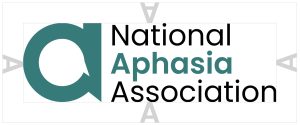Why It Matters
Aphasia is common—affecting over 2 million Americans—but awareness is low. Our survey research reveals:
- Many people have heard of aphasia, but don’t understand what it is.
- Confusion with conditions like Alzheimer’s or stroke-related disability is widespread.
- Major media moments (like Bruce Willis’s diagnosis) create spikes in awareness—but not always understanding.
By measuring these trends, the NAA:
- Identifies gaps in public knowledge
- Shapes educational campaigns
- Empowers advocates and families with real data to share
What We Learned
| Year | % Who Heard of Aphasia | % Who Could Define it Correctly | Notable Insights | |
|---|---|---|---|---|
| 1 | Script Training | Low | Very Low | First national benchmark |
| 2 | Melodic Intonation Therapy (MIT) | Higher | Still under 10% | Some growth, but confusion persists |
| 3 | Semantic Feature Analysis (SFA) | Spike in awareness | Slight improvement in understanding | Media drives interest, but myths remain |
What's Next?
We’ll continue conducting these surveys regularly. In fact, our next one is planned for 2024/2025—part of our long-term commitment to tracking and improving aphasia awareness across the U.S.
Stay tuned. With your help, we’re making aphasia known—and understood.
Media Inquiries
For Media stories and resources, contact Maura Silverman, Executive Director, maura@aphasia.org
Shop NAA Swag
Shop our branded items to support the NAA. Visit the Aphasia Marketplace
NAA Logos Guidelines
The goal of the NAA branding is to create a consistent identity and visual representation of our mission. All branding and logos must be used in a manner that supports our mission. Do not manipulate the logo in any way. The primary logo and icon color is solid teal green but could be displayed in the secondary solid eggplant purple, black or white.
Our primary logo includes the icon and “National Aphasia Association” locked together, with the emphasis on Aphasia.
Our secondary logo is the singular logomark/icon, without text.
 .
. 
The spacing around the logo is required to demonstrate the logo/icon in its original intended display.


Branding Dos and Don'ts
Do
- Do use logos in the colors and shapes provided
- Do use the logos to represent the incredible NAA-sanctioned work being done
- Do order NAA swag from Print Your Cause
Don’t
- Don’t use the NAA logo to misrepresent NAA participation in an event or partnership
- Don’t change logo colors
- Don’t change the size or ratio of the logo
- Don’t add text with the logo icon
For more branded material or logo files version, contact Maura Silverman, Executive Director, maura@aphasia.org

